Sharlyn J. Lauby's Blog, page 49
September 6, 2022
Your Recruiting Team Needs Team Development

Mr. Bartender and I are fans of the Marvel Cinematic Universe (MCU). One of the things we love and laugh about Marvel is that we have to do “homework” before watching some of their movies and shows. Case in point, before going to see “Doctor Strange in the Multiverse of Madness”, we watched an animated series called “What if…” that suggests alternative timelines in Marvel movie history. One might think of those alternatives as parts of a multiverse.
Anyway, the reason I’m bringing up this longwinded mention of Marvel and the “What if…” show is because I read an article from Josh Bersin recently talking about how “Recruiting is Harder Than It Looks: 74% of Companies Underperform”. One of the reasons that I believe recruiting functions could be underperforming is because organizations don’t view the people who have direct contact with the recruiting process as a team. As a result, they don’t give them team development.
Think about it. What if the organization viewed the group of people responsible for recruitment as a project team? The team would include HR, talent acquisition, hiring managers, facilities, payroll, learning and development, etc. Because this group works together as a team. Their goal is to find, hire, and successfully bring into the organization the best employees.
Now that the team has been identified, what if we gave them the tools to be successful? Project teams often receive training in soft skills that allow them to excel as a group.
Communication: Recruiting teams need to effectively communicate in-person and in writing. It starts with communicating the job opening and requirements. Communication skills are necessary to conduct interviews and properly document interview notes. And communication is essential in discussing final selection and evaluation.
Decision making: Speaking of final selection and evaluation, the recruiting team needs to make many decisions along the way. Who will be screened? Who will be interviewed? Who will be extended the job offer? What should the organization offer the candidate? And how much are we able to negotiate? Is there a point where we need to walk away from the negotiation?
Problem solving: Recruiting teams are well aware of challenges. It could be from a sourcing perspective – not being able to find qualified candidates. Or candidates are ghosting the company along the way. Maybe the organization is having some problems getting candidates to accept the offer. The organization might also find themselves with problems related to new hires getting acclimated to their new role.
Consensus building: While not every decision involves building consensus, recruiting teams might want to come to agreement when they’re thinking about changing a process or a requirement. For example, some companies are eliminating the need for college degrees. Or they’re adding a background check. Or moving up a pre-employment assessment earlier in the process. It’s helpful to build consensus around these decisions.
Time management: Recruiting takes time and knowing how to manage your time effectively is important. It’s one thing to manage your individual time well, and it’s another for groups to manage their time well as a team. Organizations might want to give teams the tools they need to manage a big process – like recruitment. It could help individuals realize how their actions impact the group’s goal.
As Josh Bersin mentioned in his article, recruiting is harder than it looks. It’s a complex process with lots of moving parts. If the organization isn’t viewing it as a group activity to be managed, what if it’s time to consider it. Encourage the team to work together and support each other. Give the team the tools they need to be successful. Because we want them to hire the right people and set them up for success.
Image of a room divider captured by Sharlyn Lauby at the Waldorf Astoria in Las Vegas, NV
The post Your Recruiting Team Needs Team Development appeared first on hr bartender.
September 1, 2022
7 Essential Elements in Customer Service Training

Estimated reading time: 3 minutes
Customer service training is essential element for any business. It doesn’t matter if you’re a B2B (business to business) or B2C (business to consumer) organization. Knowing how to treat customers is important. And we can’t just assume every employee knows how to do it well.
Customer service training should happen. New hires should receive customer service training. And current employees should receive “refresher” training to keep good service top of mind. Customer service should be discussed at operational planning meetings, budget meetings, department meetings, and shift briefings. Organizations need customers to survive, so delivering excellent customer service is absolutely necessary.
I’d like to think that everyone knows how important customer service is…but that being said, what are the key topics that should be covered during customer service training? Here’s a list to get you started:
Customer information. It helps to share demographic information about who the average customer is as well as their lifetime value. The marketing department knows this. If we want employees to deliver excellent service, then they need to know who they are dealing with. Performance standards. Define what good customer service looks like. This should be incorporated into employee performance. In evaluations, we can’t simply say, “delivers excellent customer service”. We need to be specific. I once worked for a company that said it included answering the phone within three rings. Regardless of how you feel about the rule, that was their definition of excellent customer service. Online customer service techniques. I’m separating online techniques here because there could be some differences in the best way to communicate with customers online versus in-person. For example, an organization might say that customers emails should be answered within 24 hours. Handling mistakes. (aka what to do when things go wrong) Sometimes organizations make mistakes. When that happens, employees should be prepared to handle customer inquiries and complaints. If they need to issue apologies, refunds, etc., they need to be ready. It’s better to proactively handle mistakes than to deal with upset and angry customers. Dealing with difficult customers. Speaking of upset and angry customers, even the best companies have challenging situations. Employees should know how to handle an emotional customer encounter. A huge component is empathy – not sympathy. Empathy is easy to explain but hard to learn and convey. Empathy can become easier once employees have a better understanding of who their customers are (see #1). How to say “no”. Sometimes no matter how much we want to, we cannot say yes to a customer request. Employees need to know how to say “no” to a customer without intentionally escalating the intensity of the situation. Empowerment. This last topic includes many of the above concepts. Employees should know 1) which customer service matters they can handle on their own and 2) which ones need management approvals. The answer isn’t that everything needs management approval. Managers don’t have the time. So training employees to handle certain matters helps customers and makes good business sense.As organizations are thinking about putting the pandemic in the rear-view mirror, they need to think about customer service. Customers are watching their budgets right now and want a good experience for their money. Organizations should have customer service training and make sure it aligns with the experience they want to deliver.
Retsuko the Red Panda courtesy of Aggretsuko on Netflix
The post 7 Essential Elements in Customer Service Training appeared first on hr bartender.
August 30, 2022
Quiet Quitting is Nothing New: What It Is and What You Can Do About It
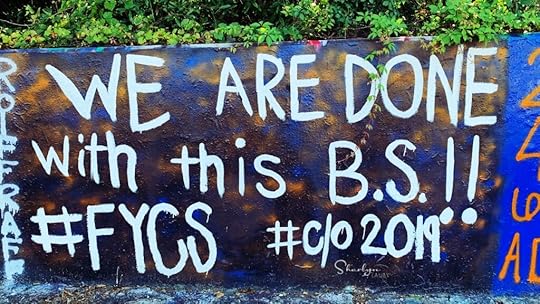
Estimated reading time: 4 minutes
By now, I’m sure you’ve heard of the term “quiet quitting”. I’ve heard it described as “renouncing the idea of going above and beyond at work.” I must admit, that makes me think of employee disengagement. Employee engagement has often been described as “when employees go ‘above and beyond’”. So, disengagement is the opposite of going above and beyond.
But as I’m reading more about this topic, one of the things I’m hearing is that quiet quitting is about employees setting boundaries. Healthier boundaries between their personal and professional lives. Meaning that employee are defining when they will – and will not – go above and beyond.
Quiet quitting is about employees not being respected. And organizations absolutely have the ability to fix that.
Sharlyn Lauby – HR Bartender
Neither disengagement nor setting boundaries is actually quitting. There is some discussion that the term is used to make these employee actions sound more atrocious. But both concepts have been around for decades. Maybe what’s making quiet quitting a current conversation is that the two concepts are being linked together?
To me, quiet quitting sounds like what happens when organizations don’t plan and communicate then dump work on employees. Then employees push back against how they are treated. Remember that old saying, “A lack of planning on your part doesn’t constitute an emergency on my part.”? Employees are smart. They don’t want to be taken for granted or taken advantage of.
Organizations have a baseline for employee performance. It’s called the performance standard. If employees aren’t meeting the performance standard, then you coach and counsel them. I’m not under the impression that’s quiet quitting. The quiet quitting conversation about going above and beyond the established performance standard.
Employees aren’t required to go above and beyond. Organizations that want employees to regularly go above and beyond need to create the environment for that to happen. And businesses that are trying to say, “going above and beyond is the performance standard”, well, let me dish out some tough love and say good luck trying to sell that to employees.
If organizations genuinely want to address quiet quitting, there are a few things they can do.
Plan better. Managers need to think ahead regarding workload. If they believe there’s a chance that they will need extra work from employees, discuss it with them in advance.
Communicate earlier. Managers don’t want employees making requests at the last minute. Managers need to do the same. Talk to employees about workload and schedules early.
Ask for help. If it looks like the department needs an extra person, see if there’s a freelancer or contractor that can help out. Or maybe an employee from another department is willing to assist.
Be flexible. If employees are working extra hours, is there an opportunity to give them some flexibility with their schedule?
Say thanks and mean it. Sometimes we just have a lot of work and there’s very little we can do about it. But one thing we can do is tell employees we appreciate them and thank them for the work they do.
I understand this doesn’t completely resolve the issue of employee disengagement. But I do believe if managers did some of these things, it’s a proactive step in improving the employee experience. That would allow the organization to address the real cause. It sounds like that’s what quiet quitting is all about. It’s about things getting so bad that employees feel their only option is to push back.
Employees should be allowed to have lives. Let me say that again. Employees should be allowed to have a life. I don’t believe that quiet quitting is about asking an employee to work a couple of extra hours. Or maybe come in on a day off. Or take some work home to help meet a big deadline. I believe employees know when it’s crunch time and are prepared to contribute. I think quiet quitting is about employees not being respected. And organizations absolutely have the ability to fix that.
Organizations cannot simply ignore quiet quitting as the latest business buzzword. The business impact is too great and there’s no reason for it.
Image captured by Sharlyn Lauby at the 34th Street graffiti wall in Gainesville, FL
The post Quiet Quitting is Nothing New: What It Is and What You Can Do About It appeared first on hr bartender.
August 28, 2022
Strategies for Organizational Restructuring – Ask #HR Bartender
Estimated reading time: 3 minutes
Organizations are currently dealing with post-pandemic plans. They are also managing economic uncertainty and a challenging labor market. With all of this going on, it only makes sense to consider whether an organizational restructuring would make things better – help the organization run more effective and efficiently. That’s what today’s reader note is about.
Hello Sharlyn. First off, your daily emails are my favorite. Thank you for that. I’m new at a small but growing company. We are dysfunctional and know it. I’ve convinced the CEO that we need a restructure of departmental flow. The two top VPs agree. We are in discussions now.
I know that slow and deliberate is the way to go along with constant communication. What advice can you offer for a company that is restructuring its organization?
First, let me say thank you for the kind words about HR Bartender. I very much appreciate it.
I’d also like to add that it’s very mature of organizational leadership team to recognize their dysfunction and be willing to explore options to fix it. I don’t know specifics about the dysfunction symptoms but one of the things that often happens in growing companies is they aren’t prepared to restructure as the business grows. On one hand, it’s a good problem to have – because the business is growing. But it’s still a problem that needs to be dealt with.
This reader is absolutely right in taking the slow, deliberate, and communicative approach. Here are some additional things to consider:
Recognize that the people who got you here, might not be able to take you to the next level. I know organizations want to reward the people who contributed to their success. But one of the worst things you can do is promote someone because they were loyal and then have them fail. Find a way to match individuals to their strengths and the needs of the company as it grows – they and the company will be better for it.
Organizational charts can be helpful tools. I’m talking old school subjects like centralization, decentralization, span of control, etc. At some point, you’ll have to show people – both internally and externally – the company structure. It should make sense and look logical.
Use external voices to challenge thinking processes. Speaking of making sense, sometimes organizations get stuck. They need an outside voice to help them get unstuck. A contractor or consultant could provide some fresh perspective during restructuring conversations. An external voice could also help individuals realize when they’re ready – or not ready – to take on a bigger role in the new organization.
Everyone does not have to love or like every decision. They do need to be able to live with it. When it comes to decision making, the organization wants people to buy-into what they’re doing. But buy-in doesn’t mean they have to love it. Or even like it. They do need to commit to being able to live with it. If they don’t, find out why. The organization cannot have individuals undermining the process.
Communicate using multiple methods (i.e., in-person and online, in writing and verbally). People consume information differently so plan to communicate multiple times, in multiple ways, using multiple people. This is too important a conversation to assume that “one and done” is enough.
Regardless of the size or type of your restructuring, I think these considerations still apply. There’s no one right outcome in restructuring an organization, but these considerations can be like ground rules to the process. If everyone can accept them, it’s a start toward productive conversations about the company’s future.
Image courtesy of LEGO Mindstorms Robot Inventor
The post Strategies for Organizational Restructuring – Ask #HR Bartender appeared first on hr bartender.
August 25, 2022
Bookmark This! Emergency Plans and Procedures

Estimated reading time: 3 minutes
Mr. Bartender and I have been thinking about emergency procedures a lot lately. First, because we live in Florida and its hurricane season. But also, because there’s been a lot of talk about “emergency go kits” and home emergency procedures.
Every geographic region has some form of natural emergency occurrence to consider. It could be snow, rain, heat, etc. If you’re not directly impacted by those, the emergency could be a power outage because of snow, rain, heat, etc. Individuals should put together an emergency plan for their home. And if you’re working from home – even only one or two days a week – it might be good to have a plan in place for how you would secure company property in the event of an emergency.
In addition, organizations should help employees put together emergency plans – for onsite, hybrid, and remote employees.
If you have a plan in place, make sure it’s current. There are several places that I like to reference when creating and maintaining emergency plans.
Federal, state, and local government. In the U.S., the Department of Homeland Security maintains the Ready.gov site which provides emergency alerts and information to help keep you and your family safe. It also has information for organizations like a business continuity plan, technology recovery plan, and how to support employees during disasters.
Professional organizations. If you belong to your local Chamber of Commerce or an industry association, see what resources they provide. The Society for Human Resource Management (SHRM) offers members sample policies for emergency evacuation procedures, emergency preparedness checklists, and toolkits to manage through disasters. They also have articles related to employee pay and leaves during disasters.
Not-for-profit organizations. The American Red Cross has resources on their website about creating an emergency plan. I really like that it’s provided in multiple languages. AARP offers downloadable guides to reduce risks and protect individuals. These guides can be helpful to employees and their families.
In addition to having guides and checklists, it’s essential to identify an emergency response team. And I can’t say this enough – give your emergency response team proper training. Some emergencies give you warning, like a weather forecast tracking the path of a hurricane. Other emergencies do not. The emergency response team needs to always be ready.
And that leads me to another aspect of emergency planning. While I’ve been talking about emergency plans in the context of weather, we need to recognize that some emergencies have absolutely nothing to do with the weather. It could be an accident, security breach, media incident, or a pandemic. Organizations (and individuals) need to think about each type of emergency they could be susceptible to and the best way to respond based on the risk factor and risk tolerance.
I realize that emergency planning isn’t the most exciting activity. Especially when we have plenty of other high priority projects to work on. But the time to talk about emergency planning is when an emergency isn’t going on. Regularly pull out the plan, review it, make any necessary updates, communicate it, and relax knowing that you’re ready.
Image captured by Sharlyn Lauby while exploring the streets of Fort Lauderdale, FL
The post Bookmark This! Emergency Plans and Procedures appeared first on hr bartender.
August 23, 2022
A Benefit to Attract and Retain Employees: Earned Wage Access

Estimated reading time: 5 minutes
(Editor’s Note: Today’s post is brought to you by our friends at Wisely® by ADP , a suite of cost-effective pay solutions that helps organizations move to 100% paperless pay. The myWisely app has been recognized as the App of the Year at the HR Technology Conference . Congrats! Enjoy the article.)
Several weeks ago, I published an article about “8 Employee Benefits Worth Considering to Attract and Retain Talent”. One of those benefits was daily pay or gig pay. The more correct term is earned wage access (EWA) and I want to elaborate on that today.
EWA refers to an employee’s ability to access their earned wages prior to the next pay cycle. It’s not a pay advance or loan. The idea behind EWA is to give employees access to money they’ve already earned. Last year, we talked about how there’s a benefit to individuals and organizations in having more control over their finances and how apps like ADP’s Wisely can help employees manage their money. As you will see, it’s all connected.
Giving employees more control over their money can benefit their financial wellbeing. In the ADP study “Employee Financial Wellness Programs: An Employer’s Guide”, more than 85% of both employees and employers agree that financial wellbeing is important to overall wellbeing. It makes sense. When employees are feeling their best, they can do their best work. And that benefits the organization. EWA is an employee benefit that helps everyone.
But before I talk about how EWA works, I want to address some of the most common questions (aka objections) that organizations might have. I could see it being necessary to get the objections out of the way before engaging in a serious dialogue about earned wage access.
Does offering earned wage access mess up the company’s payroll processing? No, EWA operates separate from payroll.Does offering earned wage access create more work for HR and payroll? No, employees would request EWA using an app like ADP’s Wisely. In fact, because employees are requesting their earned wages via an app, no one in HR, payroll, or management even needs to know. The employee can maintain their privacy.Are employees charged for using this service? Short answer – for Wisely, no. This is an excellent question and much-debated topic. I spoke with the team at ADP, and, while some EWA programs may charge an employee fee, ADP feels strongly that employees should not have to pay a fee to access their earned wages early. Let me add that I was very happy to hear this because I agree with them.Can employees take out all their pay early? No, the EWA feature of Wisely only allows employees access to a percentage of their wages (all EWA programs may not have this safeguard in place). And don’t forget, it’s their earned wages – not projected wages.So, offering an earned wage access benefit to employees is NOT going to mess up payroll, add an additional level of administration and bureaucracy, or allow employees to plan a “take the money and run” scheme.
The Advantages of Earned Wage AccessNow that we’ve gotten the objections out of the way, let’s discuss why this benefit makes so much sense. We’re all seeing the same news headlines about inflation, recession, etc. I don’t want to minimize the fact that budgets are tight right now and households are trying to figure out how to make ends meet. That alone is a relevant reason and one that shows empathy for what employees might be experiencing.
However, even when we’re not talking about inflation and recession, there are times when we need a little extra cash. It could be an unexpected medical bill, a trip to care for a family member, or frankly, just sleeping better at night knowing you have a little more in your bank account. While EWA can be helpful during a recession, it isn’t just a “recession” benefit. It’s something that any employee might need at any time.
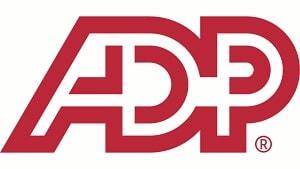
When those moments of need happen, employees don’t want to go to HR, payroll, or their boss to talk about their finances. And they shouldn’t have to. The reason an employee might need access to earned wages could be highly personal. Not to mention that the company really doesn’t want to know.
The good news is that the technology to handle the transaction already exists. It’s built into the Wisely app. Employees simply make the request, and the money is transferred into their mobile wallet.
Yes, it really is that easy.
Yes, it takes longer to answer all the potential objections than to give employees a benefit that will help them manage their money better.
Yes, it takes longer to answer all the potential objections than to give employees a benefit that will help them manage their money better.
Of course, organizations should ask all the questions and make sure the appropriate precautions are in place. But at the end of the day, employees should have access to their earned wages. Employers should not create obstacles to giving employees their money.
Some employees are going to use this benefit with more frequency. Others might use it rarely. Everyone will agree that having the option available to them is important. It could be one of those benefits that sets your organization apart from everyone else because the company is thinking about an employee’s financial wellbeing.
When and how employees get paid can be a strategic advantage in an organization’s recruiting and retention efforts. If you want to learn more about earned wage access, ADP is hosting a webinar on “Offering Earned Wage Access: Strategic & Compliance Considerations”. It’s scheduled for Thursday, September 8, 2022, at 2p Eastern. And as always, if you’re already booked that day, sign up anyway to get the recording.
The post A Benefit to Attract and Retain Employees: Earned Wage Access appeared first on hr bartender.
August 21, 2022
7 Books to Start Your Human Resources Library

Estimated reading time: 5 minutes
Regardless of the stage you are in your career, everyone needs a handful of go-to work resources like books, websites, or resource guides. These are things that provide answers and information, like a dictionary or an atlas. They can help provide clarity and definition.
During my career, I’ve collected a library of work resources to help me sell ideas, maintain consistency, and get unstuck. For example, I’ve used some of my favorite books to calculate the cost-per-hire metric as a justification in selling senior management on changing the amount of an employee referral bonus. Another one served as a checklist of all the things to remember when I was looking for low-cost and no-cost perks to discuss during an employee focus group. And when I was stuck trying to design a training program, a book offered the definition of an A-B-C-D objective to help me refocus.
Whether you’re an HR professional or people manager, having a small HR library could become your go-to place for practical answers and solutions to help during challenges. Following are a few of the books in my work library. One of the reasons I’m listing these books is because they’ve withstood the test of time. So don’t feel that you need to have the latest edition. If you can find a used copy, it should work well.
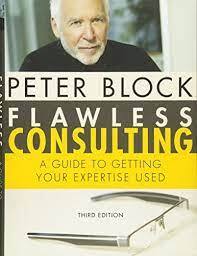
“Flawless Consulting: A Guide to Getting Your Expertise Used” by Peter Block. Don’t let the title trick you into thinking this is a book for external consultants. While external consultants can use it, the book does a great job of developing internal consulting skills, such a key component to getting ideas heard.
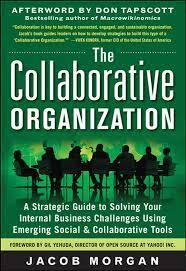
“The Collaborative Organization: A Strategic Guide to Solving Your Internal Business Challenges Using Emerging Social and Collaborative Tools” by Jacob Morgan. The amount of work we do using collaboration has been steadily increasing over time. And we don’t spend nearly enough energy talking about what collaboration is – because it’s not always compromise and consensus building.
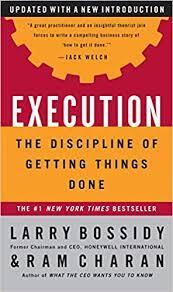
“Execution: The Disciple of Getting Things Done” by Larry Bossidy and Ram Charan. Many organizations and individuals are great at thinking up ideas then fail miserably at getting those ideas accomplished. Hence, the focus on execution. Bossidy and Charan’s book is focused on turning concepts into reality.
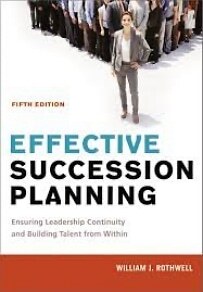
“Effective Succession Planning: Ensuring Leadership Continuity and Building Talent from Within” by William J. Rothwell. What I love about this book is the details. It’s filled with worksheets, assessments, etc. to get your planning process started. Even if your organization isn’t ready to commit to a full-blown succession plan, this book can help you take your first steps. And it’s there when you’re ready to take the journey further.
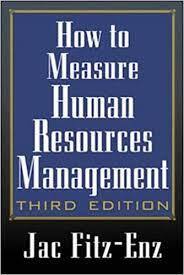
“How to Measure Human Resources Management” by Jac Fitz-Enz. This book tells you how to calculate everything HR. Now, that being said…you should not calculate everything. You should calculate what the business is prepared to pay attention to and act on. This book helps organizations calculate the right metrics.
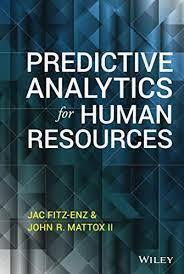
“Predictive Analytics for Human Resources” by Jac Fitz-Enz & John R. Mattox II. If you like the writing style of “How to Measure Human Resource Management”, this book takes the conversation one step further with a discussion of analytics. It’s short – only 163 pages – so it’s not overwhelming.
PLUS! There’s one more book I’d like to add to the list. My latest book is “The SHRM Essential Guide to Talent Management”. I wrote this book to be the “go-to work resource” about talent management that I would want on my bookshelf. It provides key principles, models, definitions, and resources for every phase of the employee life cycle. Inside there’s a QR code so we can continue to provide online resources. I hope you’ll check it out.
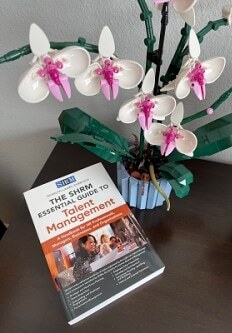
We need to have a collection of resources that will help us get the answers we need during our career. When we’re busy, we don’t always have hours to research. Our HR library can give us the answers we need when we need them.
The post 7 Books to Start Your Human Resources Library appeared first on hr bartender.
August 18, 2022
Please, please, please do not ask employees to work when they are sick

Estimated reading time: 4 minutes
By now, you have probably seen the new guidance from the Centers for Disease Control that says people who have been exposed to COVID do not need to isolate. The new guidance also minimizes activities like contact tracing and distancing. I’m not here today to tell you whether to get vaccinated or wear a mask. I am here to say that when individuals need to take care of their health, they should be allowed.
I understand that we’re trying to put the pandemic behind us. But COVID is still a part of the world and our lives. And at the same time, we’re facing another public health emergency with MPV, also known as monkeypox virus. Employees might be extra cautious because they’re in a high-risk category or they have a friend or family member who is. Maybe an employee is still grieving the loss of someone close to them.
The reason for today’s article is that I’m starting to see an increasing number of headlines indicating that it’s getting harder for employees to take time off to recover from COVID. Honestly, we need to stop this. We should not ask people to work when they are sick and we should not have to explain to people not to work when sick, or in the case of COVID – contagious. I shouldn’t have to say this but let me say it anyway. Regardless of the reasons, asking an employee to work when they have tested positive for COVID (or going into work when you’ve tested positive) doesn’t come across like you have regard for the welfare of others.
EMPLOYERS: Please tell your employees not to come to work when they are sick, that includes COVID. If you don’t offer paid sick time, consider doing so. It’s not 1985 anymore – paid sick leave is a common – and expected – employee benefit. Not only will it keep employees from showing up to work when they’re sick, but it could be a way to attract candidates. If you have employees who habitually take advantage and call-in sick, coach and counsel them. Don’t pressure them into coming to the office anyway.
EMPLOYEES: Please don’t go to work when you are sick, that includes COVID. I understand that this could mean having less pay. And it’s easier said than done – especially with all the talk about inflation and recession. But figure out how to either save up a “sick day” fund or find another employer that treats you better by offering paid sick time. I’m pretty sure you do not want to be the reason that someone’s family member, friend, or coworker gets sick. Maybe goes to the hospital. Possibly dies. Be a good role model for others and practice safety in the workplace.
Honestly, I don’t want to believe that these situations happen to intentionally cause harm. And I understand it’s confusing. We all watched the President recently work from home after he tested positive for COVID, while under a doctor’s care. If an employee insists that they’re taking medication and can get a little work done, then maybe it’s fine to do some work from home. I would strongly suggest speaking with legal counsel to put the appropriate protocols in place. But it’s not mandating that the employee come to the office while they are contagious.
We want any employee who tests positive for COVID to get well. While we don’t know all the causes for long-COVID, we do not want an employee to experience the symptoms of long-COVID because they didn’t take care of themselves when they originally tested positive.
People want to go places where they feel safe. Let me say that again. People want to live and work and shop and dine at places where they feel safe. Which means that we all must act safe. Staying safe is not asking an employee to go to work when they test positive for COVID. And it’s not going into the office when you test positive thinking no one will notice or care.
Image captured by Sharlyn Lauby at the 34th Street graffiti wall in Gainesville, FL
The post Please, please, please do not ask employees to work when they are sick appeared first on hr bartender.
August 16, 2022
Goblin Mode In the Workplace Today
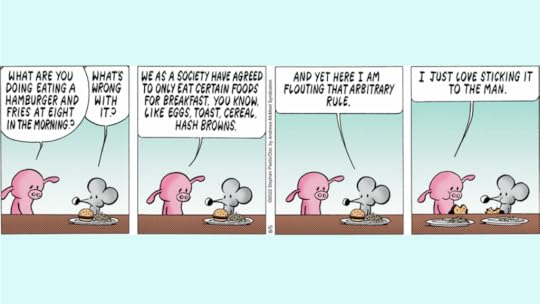 PEARLS BEFORE SWINE © Stephan Pastis. Reprinted by permission of ANDREWS MCMEEL SYNDICATION. All rights reserved.
PEARLS BEFORE SWINE © Stephan Pastis. Reprinted by permission of ANDREWS MCMEEL SYNDICATION. All rights reserved.Estimated reading time: 3 minutes
A few months ago, I read an article on The Hustle about “goblin mode”. They described it as a “full-on rejection of self-betterment”. Some examples they cite of goblin mode include eating weird snacks in the middle of the night, wearing untraditional attire, and spending more time on mindless activities like scrolling social media. While the term goblin mode first appeared in 2009, the pandemic has resurrected it (of course!).
The reason it intrigued me is because of the implications for goblin mode at work.
On one hand, I could see goblin mode being a wonderful thing. Let employees wear whatever they want as long as they get their work done. Who cares if it matches? No one will be judgy about the way another person dresses. And maybe the office could have a weird snack contest. You know like a taste off between saltines with melted cheese versus tortilla chips and peanut butter.
Back to the goblin mode topic. I can also see goblin mode being a challenge. What if that rejection of self-betterment includes a lack of hygiene? Or something considered offensive? Then sadly, management must get involved.
In doing some additional reading about goblin mode, I discovered it’s more than just a pop culture reference. Some people are defining it as being able to free themselves from the pressures and stresses of life. This could be very good for a person’s mental health which is a huge area of focus right now for individuals and organizations. The question becomes are organizations willing to let employees go “goblin mode” to get the best work from them? And if there’s a line, what is it?
Learning more about goblin mode made me wonder if this is some of the reason that employees want to work from home or have the option to work from home occasionally. Does getting the opportunity to not come into the office allow employees to have a much needed goblin day (or two) and then come back refreshed and ready to follow all the rules they must adhere to at work?
I don’t know that I have all the answers here, but I do know that allowing employees to be themselves is key to employee engagement and retention. And maybe that’s what workplace goblin mode is really all about – allowing employees to be comfortable expressing their inner selves, including their weirdness, without criticism or consequences.
Organizations are going to have to think about this in the context of their culture. Does company culture allow employees to be themselves? Employees are going to have to consider this as well. I wonder how many people do what’s called goblin mode without realizing that someone has defined it. Whatever you want to call it, people want to be themselves because it makes them feel comfortable to do their best work. Now organizations have to decide if they’re going to allow it.
The post Goblin Mode In the Workplace Today appeared first on hr bartender.
August 14, 2022
The 5 Stages of Digital Maturity

Estimated reading time: 3 minutes
There’s a great series in Harvard Business Review talking about “The Digitally Literate Organization”. The first segment in the series is focused on giving everyone in the organization the capacity to innovate. There’s a lot of information to take in, but I would recommend checking it out when you have time.
One of the pieces in the article that I particularly liked was a chart that outlined the stages of digital maturity. The reason that I liked it was because I thought it was something that could apply not only to organizations but to individuals. Where are you – company or person – on the digital maturity scale?
Traditional: This stage talks bout silos. From an organizational perspective, that could mean that departments or divisions are keeping data to themselves and not sharing with others to make good decisions for the company. On an individual level, are we doing the same thing? Keeping information to ourselves and not sharing with others?
Bridge: The article describes this stage as having centralized data and the ability to share data throughout the organization, which is great. During this stage, both individuals and organizations need to focus on building good processes to share data and ensure the data being shared is current and relevant.
Hub: This stage of digital maturity adds the advantage of real-time. From a technology perspective, real-time data and analytics is essential to making good business decisions. Individuals need to have the training and development to properly process the data and act. The key here is being able to take action…and take the rightaction.
Platform: My take on the platform stage was mobility. In the hub stage, we get real-time analytics, and our goal is to make real-time business decisions. With platform, real-time analytics happens via apps and mobile devices. From an individual standpoint, we can collaborate remotely and make decisions out of the traditional office setting.
Native: The final stage of digital maturity is native and my interpretation of this focused on giving everyone in the organization access to data, the tools to analyze data, and empowering them to take action when necessary.
As you can see, the stages build on each other. And with each technology enhancement comes the need for us as individuals to become more proficient, not just with using the technology but with being able to analyze and act on the data. That’s what made me think that the digital maturity stages aren’t just what kind of technology the organization has but it’s about the level of training and development we’ve given to employees at every level.
The other big takeaway for me from the HBR article was that organizations need to shift their views about who owns technology in the organization. I’m not suggesting we get rid of the technology department. We need individuals to help build and maintain the infrastructure. But we also need everyone in the organization to have a certain level of tech knowledge.
So as the organization is saying “What stage of digital maturity are we at?” We also need to add “What level of digital maturity are our employees at?” And where do we need to be to be competitive in the market? With all the talk about the economy, organizations need to be competitive, and technology is going to be a key differentiator.
Image captured by Sharlyn Lauby while at the Wynwood Art District in Miami, FL
The post The 5 Stages of Digital Maturity appeared first on hr bartender.
Sharlyn J. Lauby's Blog
- Sharlyn J. Lauby's profile
- 10 followers



